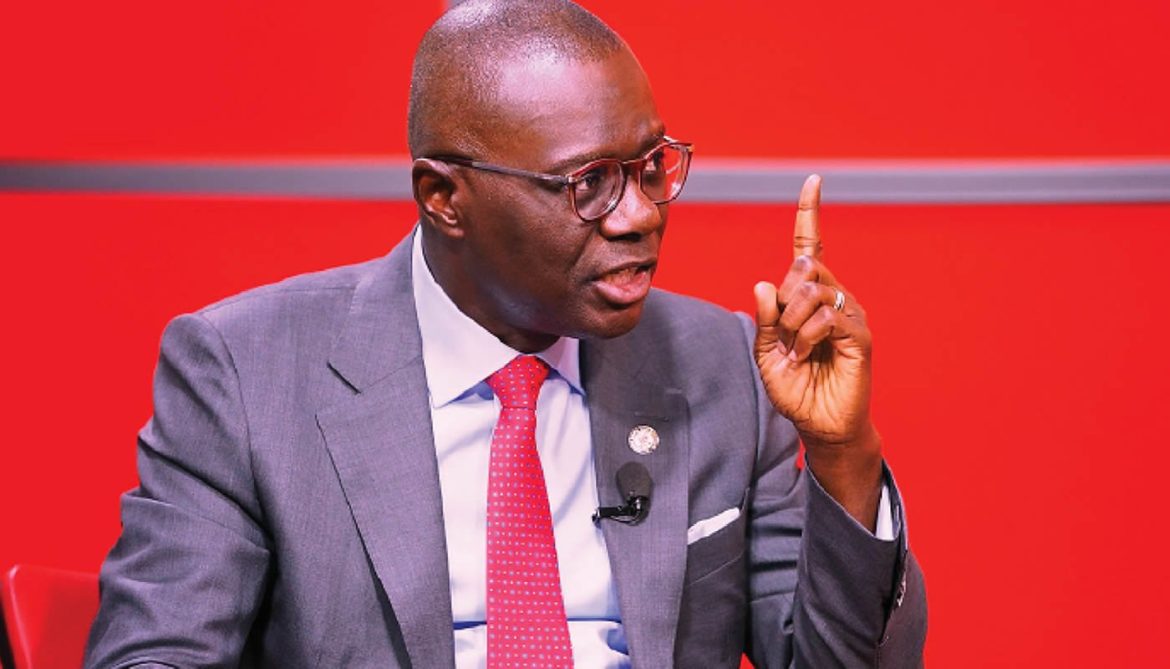Governor Babajide Sanwo-Olu is preparing to present a proposed N4.2tn budget for the 2026 fiscal year to the Lagos State House of Assembly, marking another significant rise in the state’s yearly spending plan. The proposal came to light after the Assembly confirmed that it had received an official communication from the governor, asking lawmakers to choose a suitable date for him to lay the 2026 Appropriation Bill before them.
The letter, which was read on the floor of the House by the Clerk, Mr. Olalekan Onafeko, formally kicked off the legislative process that will lead to the budget presentation. According to the governor’s communication, he is proposing a total estimate of N4.27tn for the 2026 financial year. As of the time of filing this report, the Assembly had not fixed any date for the budget presentation.
When contacted on Tuesday about when Governor Sanwo-Olu would appear before the lawmakers, Clerk Onafeko said he would respond soon but had not yet reverted. This delay means Lagos residents will continue to wait for a clearer timetable on when the key financial document for 2026 will be unveiled.
The proposed N4.2tn spending plan represents a major leap in Lagos State’s budget size. Over the past five years, the state’s annual budget has increased by more than N3tn under the administration of Governor Sanwo-Olu. Budget records show that Lagos’ appropriation has risen from N1.1tn in 2021 to the N4.2tn now proposed for 2026 — an increase of N3.074tn during this period.
In 2022, the state increased its budget to N1.75tn, followed by N1.76tn in 2023. The figure rose sharply to N2.26tn in 2024, signalling the start of a period of aggressive budget expansion. By 2025, Lagos crossed the N3tn mark with a N3.366tn budget, before moving even higher to the proposed N4.237tn for 2026.
Economic experts say the rising budget reflects both the growing needs of Lagos as Nigeria’s economic hub and the broader financial realities affecting all states. Speaking on the trend, an economist and the Chief Executive Officer of Cowry Treasurers Limited, Mr. Charles Sanni, described the increase as a positive development. He said rising budget sizes often indicate efforts to expand infrastructure and support economic growth.
According to him, “The intention of the government should always be positive and upward-looking. As long as the budget trajectory is rising, there is no cause for concern. If it’s going down, then we should worry. So I’m not worried; it’s a welcome development.”
Mr. Sanni added that a rising capital expenditure component, driven by infrastructure investments, usually points to healthy economic growth. He noted that Lagos, being a centre of commerce and population growth, requires steady investment to keep pace with rising demands for roads, health services, housing, transportation and education.
The economist also identified key factors responsible for the steady rise in Lagos’ budget over the years. These include inflation, post-naira floatation adjustments and the increased revenue accruing to states after the removal of the petrol subsidy. He explained that inflationary pressures have pushed up the cost of running government, while the new revenue-sharing pattern has given states more financial room.
“The impact of inflation must be well captured in the budget proposal. That’s partly the effect we are seeing. Also, after the naira floatation and fuel subsidy removal, state governments have received a greater percentage of allocation. So it is expected that we see this level of increase,” he said.
As Lagos continues its long-term development drive, the huge 2026 budget proposal suggests that the government plans to invest more in public infrastructure, social services and economic programmes. However, the details of the proposed spending will become clearer when Governor Sanwo-Olu eventually appears before the House of Assembly to present the Appropriation Bill.
Residents and stakeholders are now waiting for the lawmakers to fix a date for the presentation, which will give a clearer picture of Lagos State’s priorities for 2026 and how the proposed N4.2tn will be allocated across sectors.
